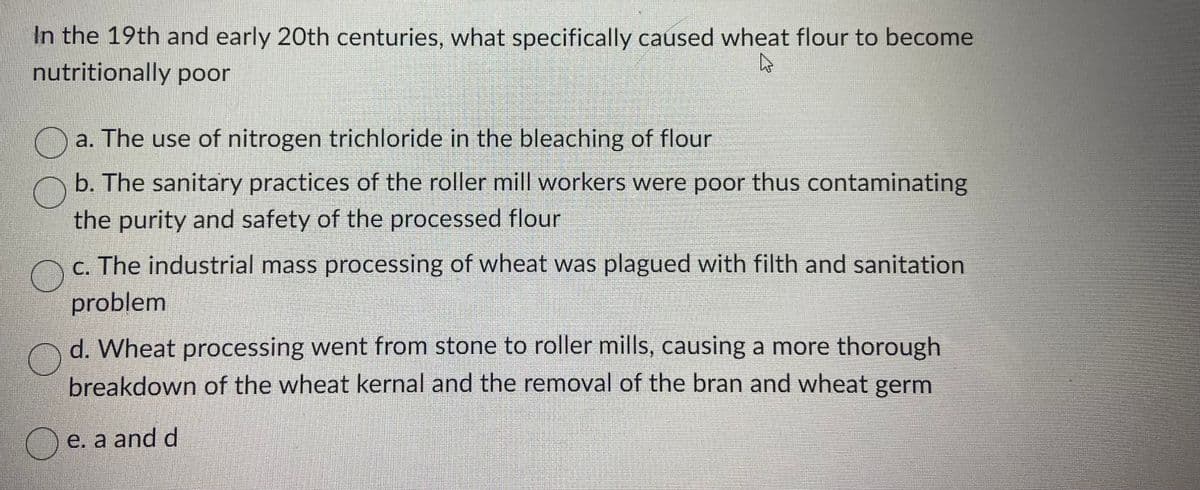In the 19th and early 20th centuries, what specifically caused wheat flour to become nutritionally poor h a. The use of nitrogen trichloride in the bleaching of flour b. The sanitary practices of the roller mill workers were poor thus contaminating the purity and safety of the processed flour Oc. The industrial mass processing of wheat was plagued with filth and sanitation problem d. Wheat processing went from stone to roller mills, causing a more thorough breakdown of the wheat kernal and the removal of the bran and wheat germ e. a and d
In the 19th and early 20th centuries, what specifically caused wheat flour to become nutritionally poor h a. The use of nitrogen trichloride in the bleaching of flour b. The sanitary practices of the roller mill workers were poor thus contaminating the purity and safety of the processed flour Oc. The industrial mass processing of wheat was plagued with filth and sanitation problem d. Wheat processing went from stone to roller mills, causing a more thorough breakdown of the wheat kernal and the removal of the bran and wheat germ e. a and d
Related questions
Question

Transcribed Image Text:In the 19th and early 20th centuries, what specifically caused wheat flour to become
nutritionally poor
A
DE a. The use of nitrogen trichloride in the bleaching of flour
b. The sanitary practices of the roller mill workers were poor thus contaminating
the purity and safety of the processed flour
c. The industrial mass processing of wheat was plagued with filth and sanitation
problem
d. Wheat processing went from stone to roller mills, causing a more thorough
breakdown of the wheat kernal and the removal of the bran and wheat germ
e. a and d
Expert Solution
This question has been solved!
Explore an expertly crafted, step-by-step solution for a thorough understanding of key concepts.
This is a popular solution!
Trending now
This is a popular solution!
Step by step
Solved in 3 steps
